When planning to walk the Camino de Santiago, one of the many questions that arise is where to eat. Nutrition, as you might know, is crucial for an activity like hiking. Moreover, since you will be traveling through northern Spain and Galicia, why not try their gastronomic delights? For many, what to eat on the Camino de Santiago is one of the many aspects that enrich this experience. Here you will find a complete guide to fully enjoy the cuisine while walking a Jacobean route.
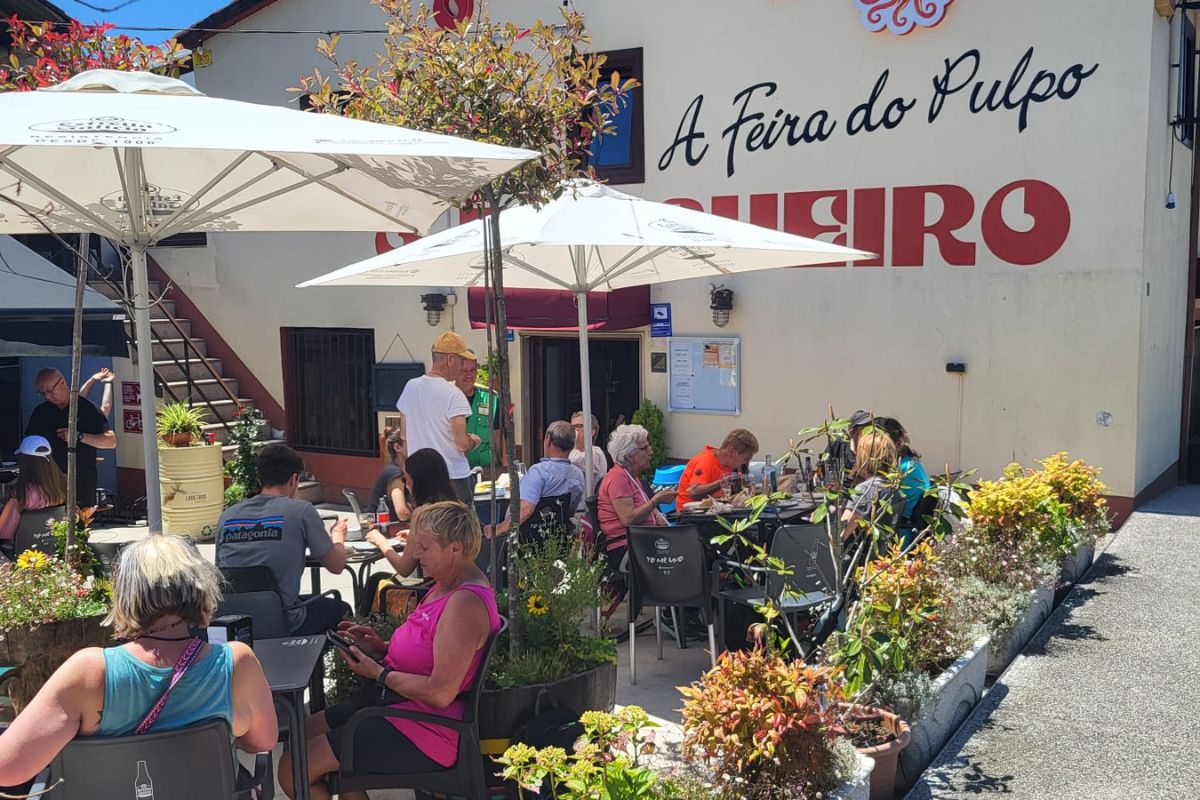
Pilgrims enjoying a gastronomic feast in Santiago de Compostela
Breakfast on the Camino de Santiago
Let’s start with the first and most important meal of the day, breakfast. For many, and especially on an adventure like the Camino de Santiago, it’s the necessary fuel to kick-start a stage with energy.
If you stay in hostels, you will usually have to prepare it yourself, as they rarely provide breakfast service. If you stay in guesthouses or hotels, you can often have breakfast at the accommodation itself, sometimes with a buffet breakfast. Another option, the most common and recommended, is to have breakfast at any open café you find.
Some people prefer a hearty breakfast before walking, but others, with their stomachs still closed, prefer to do so once they have started the stage, during the Camino. There are many bars along the stages, and even homemade food stalls operating on donations.
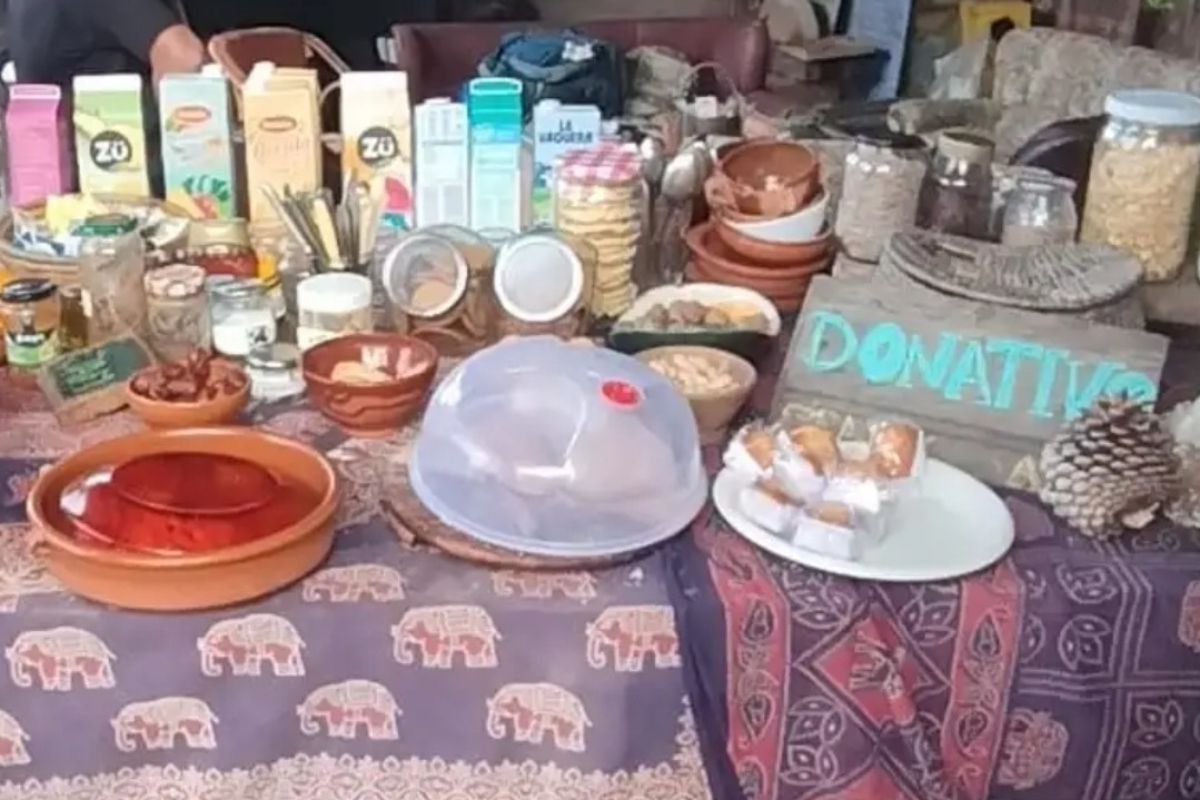
Many Camino houses offer homemade food on a donation basis
Traditional options
Traditional options usually include toast with jam, butter, or tomato, accompanied by a coffee with milk or orange juice. Pilgrims also often opt for pastries, such as croissants or muffins, which are easy to find in any café.
Healthy options
For those who prefer a healthier option, many cafés offer fresh fruit, yogurt, and cereals. Moreover, along the Camino, you will find many establishments with homemade and local products, giving a special and authentic flavor to your journey.
Lunch on the Camino de Santiago
For others, lunch is the most important meal of the day. However, since they are walking, some prefer to eat lightly during the stage, saving a more substantial meal for the end of the day, or reserving themselves for dinner.
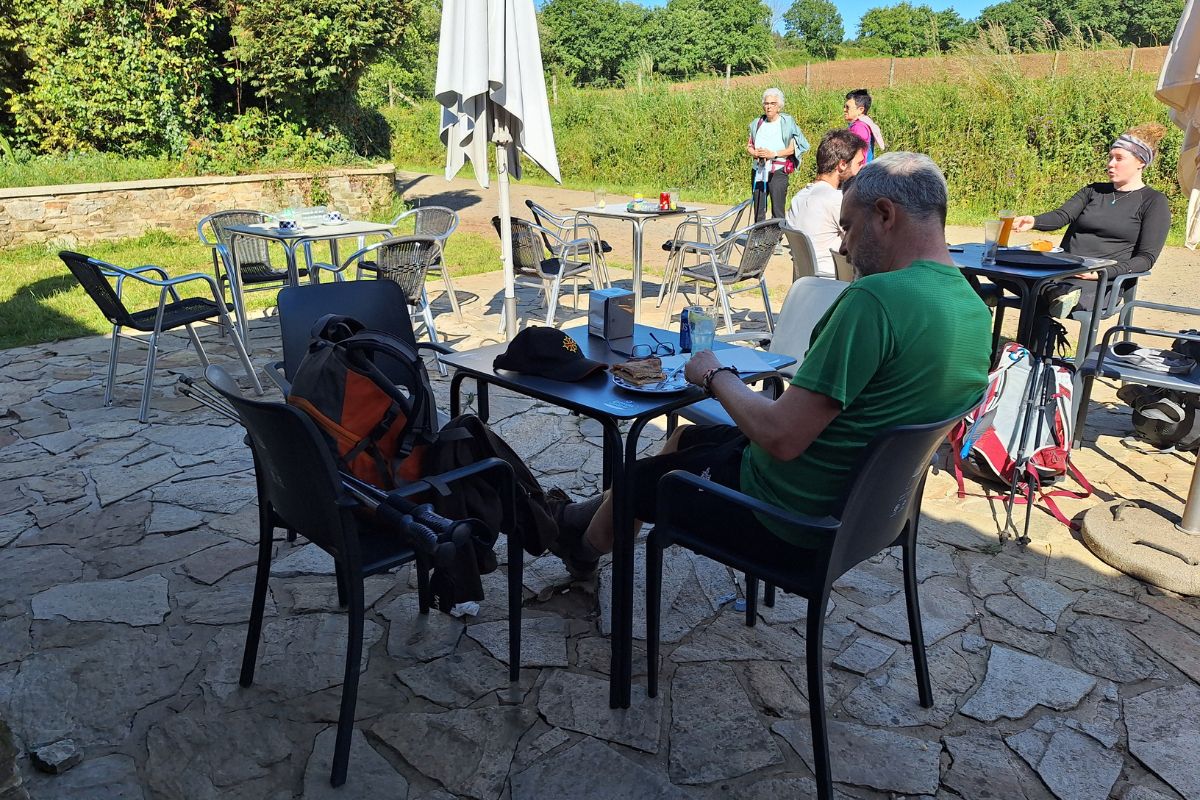
Many pilgrims prefer a light meal, such as a portion of empanada, in some bar or restaurant along the Camino
Daily menu or pilgrim’s menu
Many restaurants and bars along the Camino offer the daily menu or pilgrim’s menu. These menus usually include two courses, a dessert, a drink, and bread, often featuring salads, soups, meats, fish, and pastas. The price is generally around €10 per person. Alternatively, you can order à la carte if the menu does not suit your preferences.
Picnic and take-away meals
For those who prefer to keep walking without stopping for long in a restaurant, or simply save money, a picnic is an excellent option. You can buy bread, cold cuts, cheeses, fruits, and snacks at local shops. Preparing a sandwich and enjoying it in a rest area allows you to keep up with the day’s pace without long breaks.
Dinner on the Camino de Santiago
Dinner is a time to relax and enjoy after a day of walking. Pilgrims, often forging new friendships, usually gather to share experiences, whether with some tapas or a well-set table.
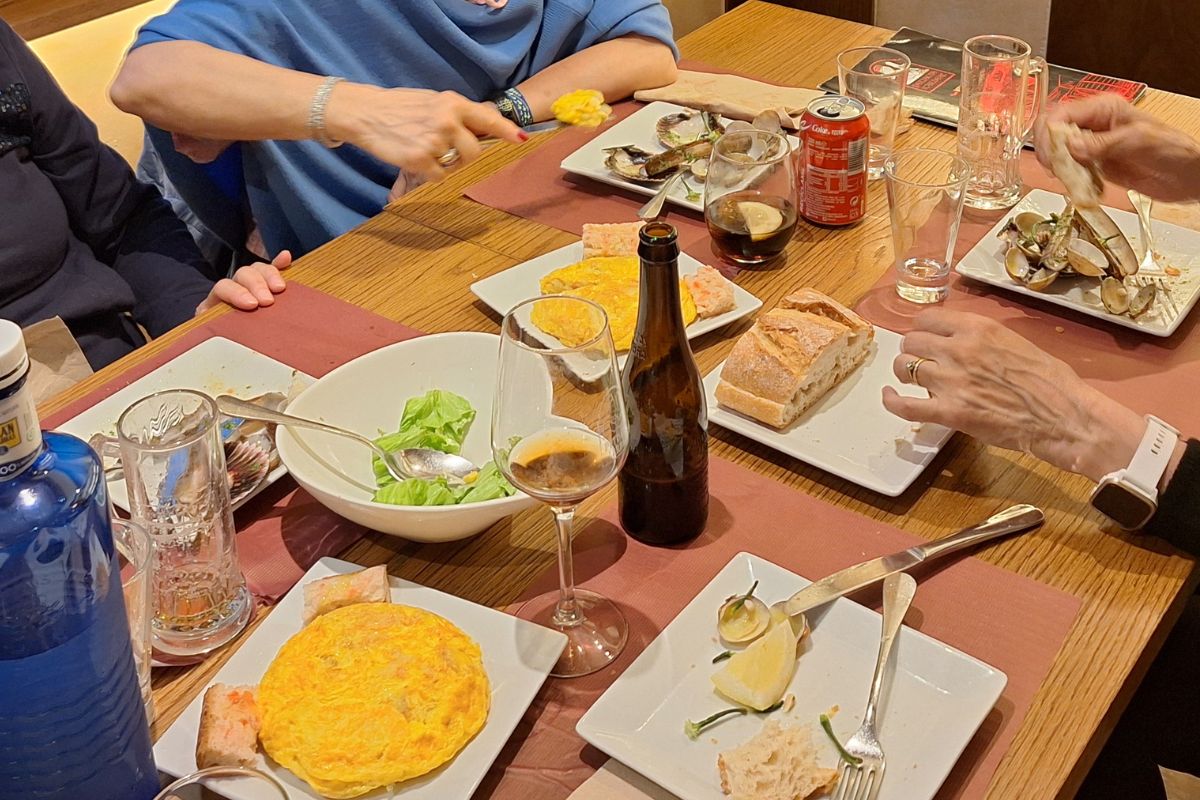
Pilgrims enjoying a hearty dinner
Often, albergues offer communal dinners that include homemade and traditional regional dishes. If you stay in other accommodations, you can also go to a restaurant, choose a menu, or eat à la carte.
Typical regional dishes
During the Camino de Santiago, you will have the opportunity to try various typical dishes from the regions you pass through. As mentioned, in northern Spain and especially in Galicia, the cuisine is highly regarded, and rightly so. Here is a gastronomic selection on the Camino de santiago from our pilgrim chef.
Octopus
The typical Galician octopus is pulpo á feira, boiled and served with olive oil, salt, and paprika. It is a delicacy that can also be served over a base of boiled potatoes, known as pulpo a la Gallega, or even grilled. In many towns along the Camino, you will find it, with one of the most famous being in Melide, in the last 100 km of the French Camino.
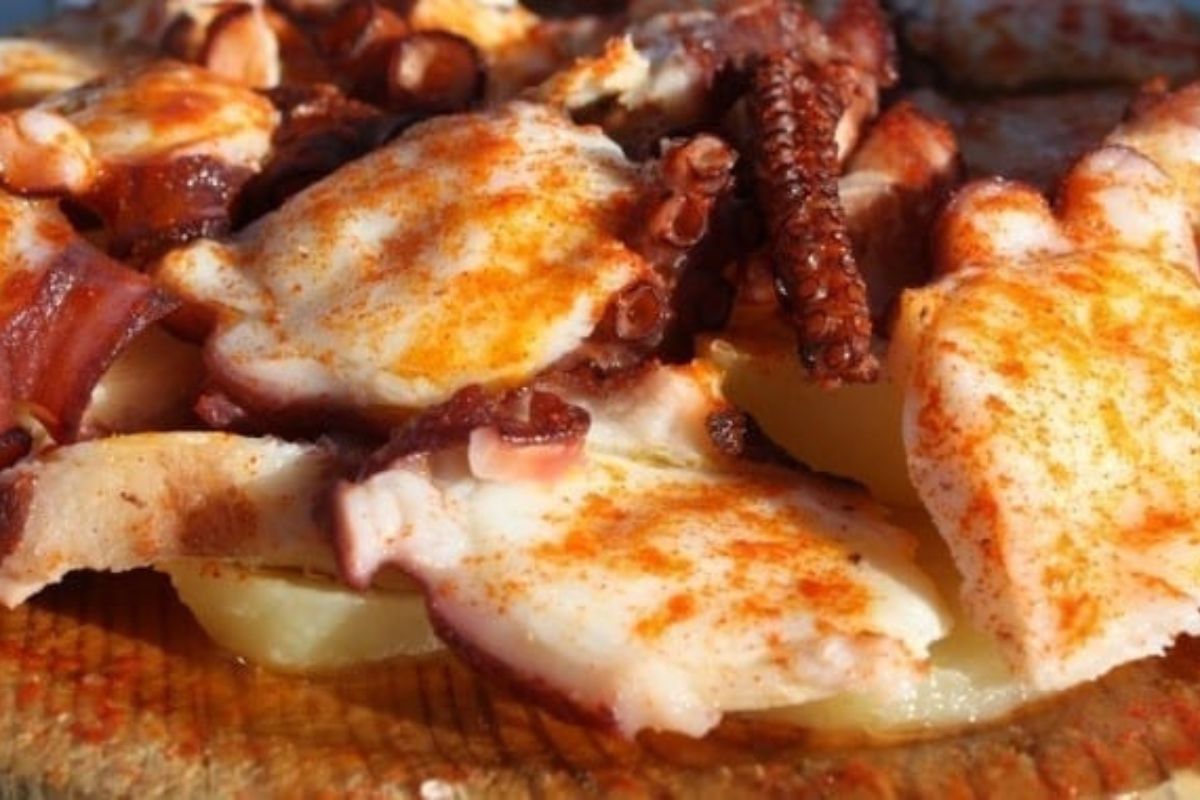
Octopus is one of Galicia’s most typical delicacies
Galician broth
The most known after octopus, a dish of spoon based on pork fat, turnip tops or cabbage, potatoes, and beans. A dish found everywhere, typical in cold seasons, although it can be enjoyed almost all year round. If you haven’t tried this soup, perfect for dinner, you haven’t been to Galicia.
Padrón peppers
These small green peppers, very typical of Galicia, are fried and seasoned with extra virgin olive oil and coarse salt. Most are mild, but occasionally you’ll find a spicy one, a surprise in every bite! The most famous come from Herbón (Padrón), in the last 100 km of the Portuguese Camino: as the saying goes, “some are hot, some are not!”
Galician empanada
Another Galician delight, the empanada or galician pie is a dough filled with meat, fish, or seafood, mixed with vegetables. It is perfect for a quick and substantial lunch, with the advantage of being easy to carry and eat at any time. Very typical in Galicia, so much so that even in the Portico of Glory of the Santiago Cathedral, a sinful glutton is carved eating one.
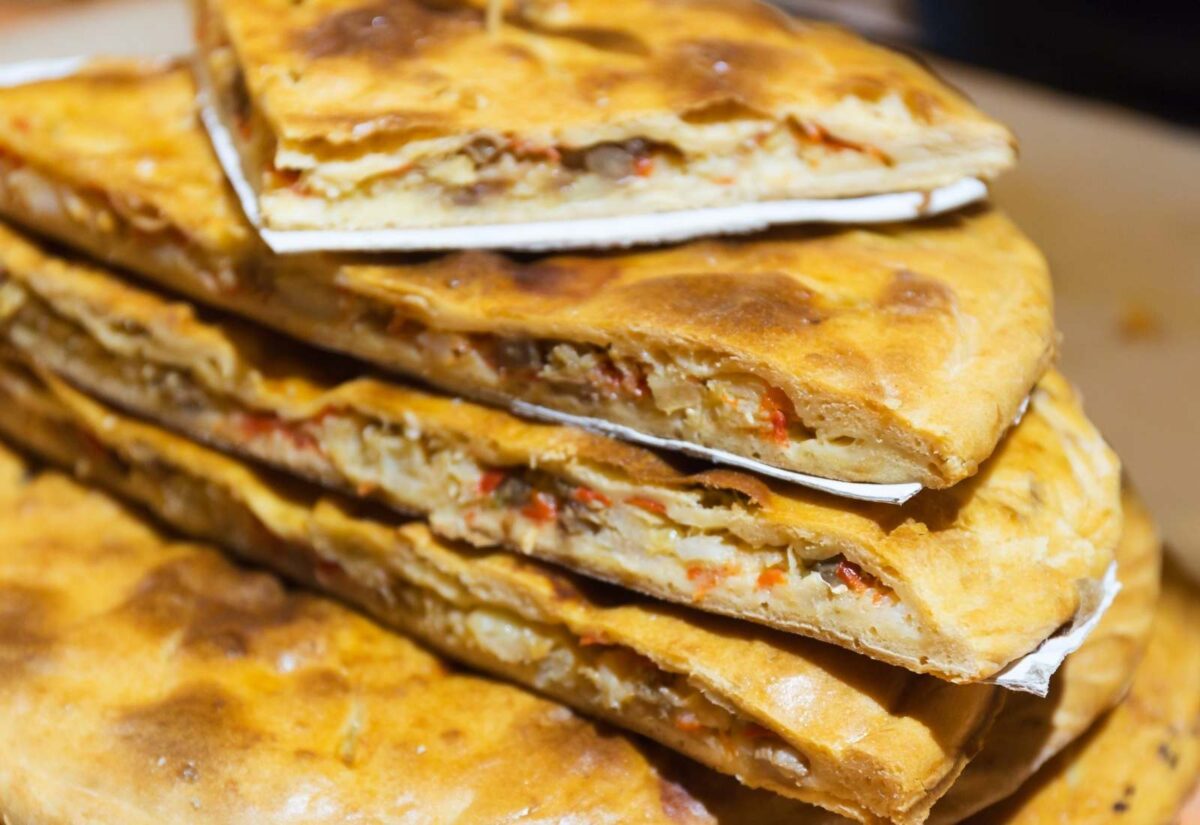
There are empanadas filled with anything, from meat, tuna, octopus, to scallops
Grilled zamburiñas
Zamburiñas, or their variant known as volandeiras, are a typical product of the Galician coasts, not to be confused with scallops. They can be found in any restaurant or bar in Galicia, but the coast is the ideal place to taste them. This bivalve is cooked with oil, garlic, and parsley on the grill, making simplicity a feast for your palate.
Tarta de Santiago
When it’s time for dessert, here’s a typical sweet to finish your day. This almond cake, covered with powdered sugar and decorated with the cross of Santiago, is delicious and representative of the Camino. It is a traditional dessert that you must try.
As you can see, a good menu, right? Galician cuisine offers a lot of variety, as do other typical dishes from northern Spain that you can try on any Camino route.
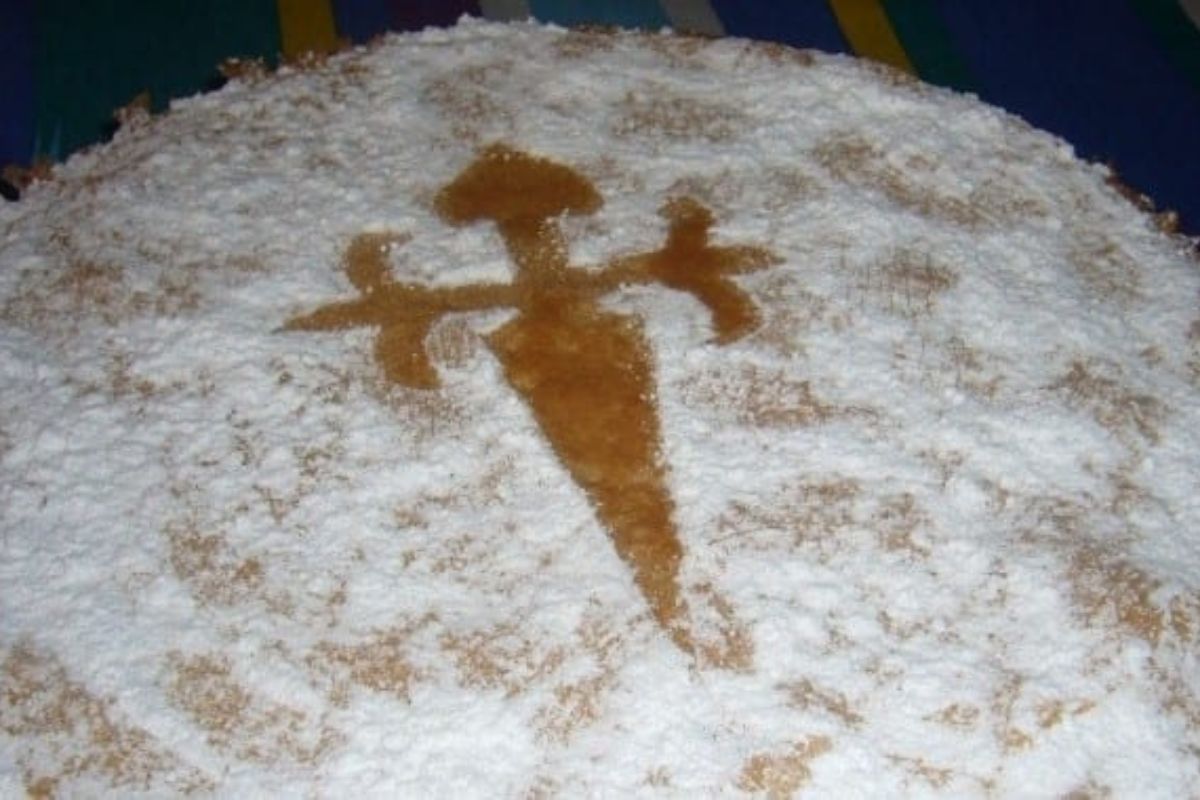
Sweeten your Camino with a good tarta de Santiago
Practical tips on nutrition
Nutrition is one of the important expenses on this trip. We don’t refer so much to the cost, as in Galicia you eat a lot, well, and cheaply, but to the importance of eating well.
Hydration
Staying hydrated is very important during the Camino de Santiago, a health tip you shouldn’t forget. Always carry a water bottle with you and refill it at the drinking water fountains you find along the Camino. Avoid overusing sugary and alcoholic drinks during the walks, as they can dehydrate you.
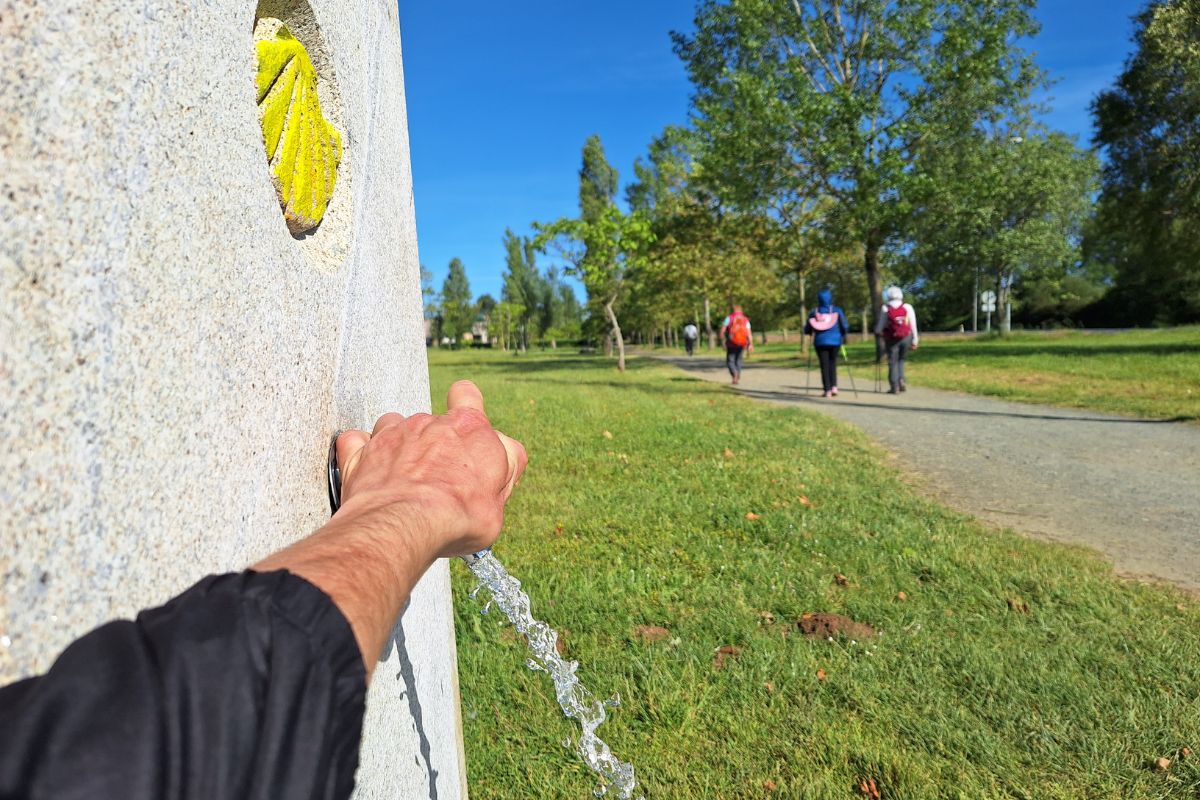
Galician water is practically all drinkable
Snacks and appetizers
Carrying snacks is an excellent idea to keep energy levels up between meals. Fruit, nuts, energy bars, and whole grain cookies are easy-to-carry and nutritious options.
As a rule, on all routes and stages of the Camino, you eat excellently, and you’ll have all kinds of alternatives for all budgets. Whether eating in restaurants or buying food in shops and supermarkets, you won’t go hungry on the Camino. Also, at the end and beginning of stages, you’ll have many options, both Galician and international cuisine, to treat yourself.
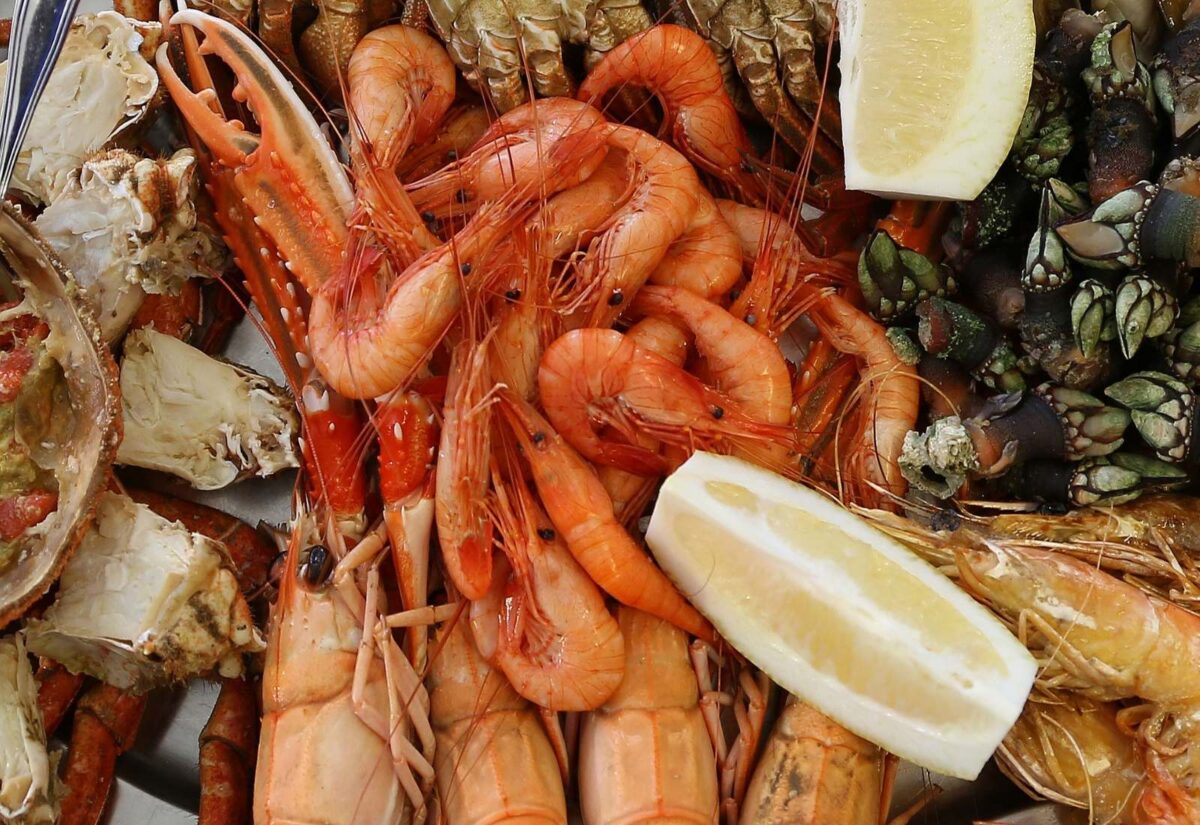
After a Good Camino, don’t eat a pilgrim’s menu
We insist, if you’re going to do a stretch that mostly runs through Galicia, what to tell you… you’re in the capital of gastronomic delight! Galicians are naturally good eaters: we love eating and offering rich and abundant food to our visitors, above all else. And of course, to celebrate your end of the Camino, you can feast in one of the restaurants in Santiago de Compostela. If you’re a food lover and wonder what to eat on the Camino de Santiago, you’re in the right place! Enjoy your meal and Buen Camino!

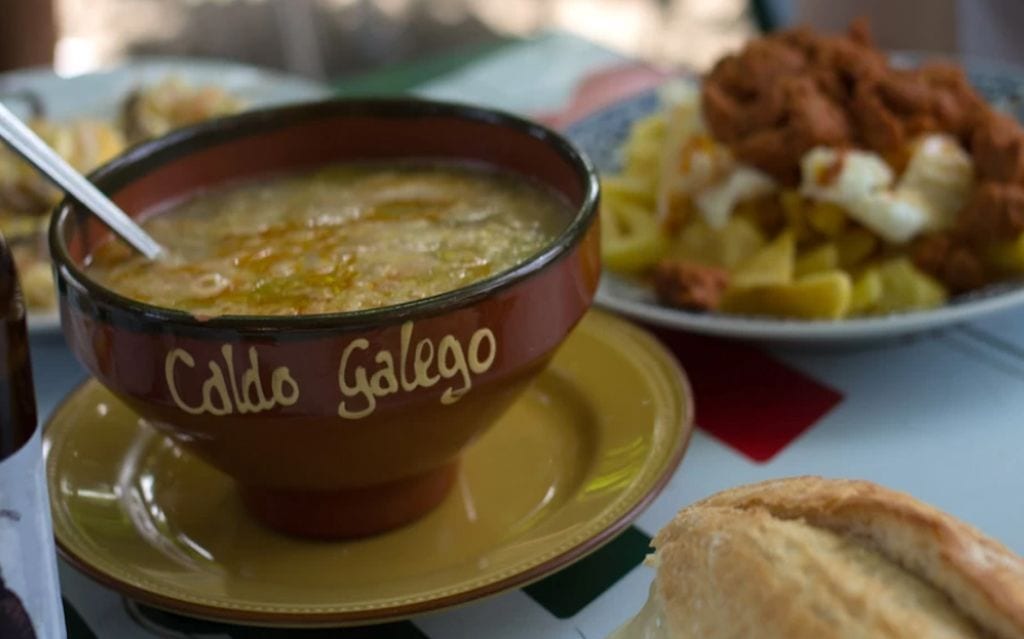


Leave A Comment